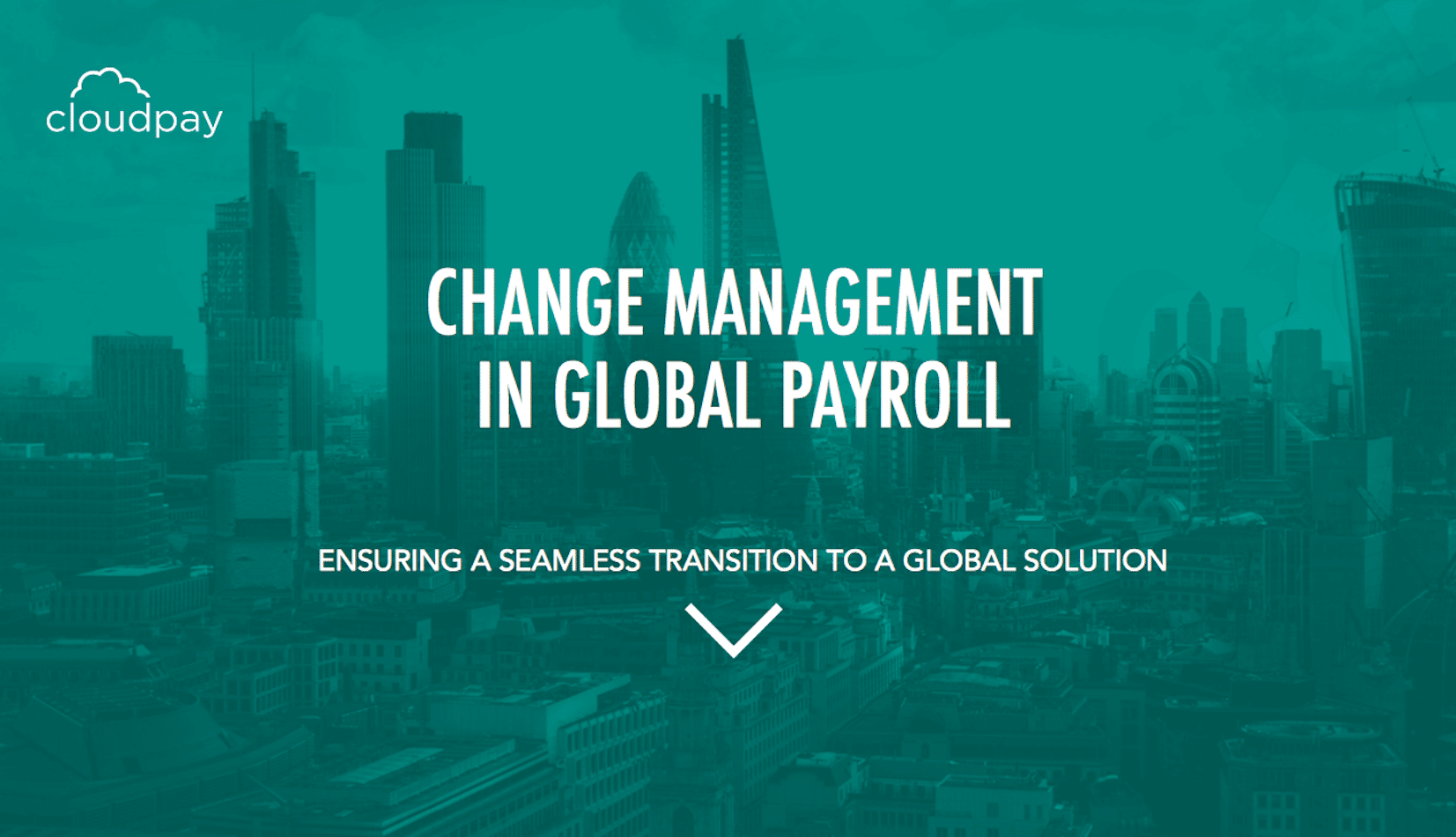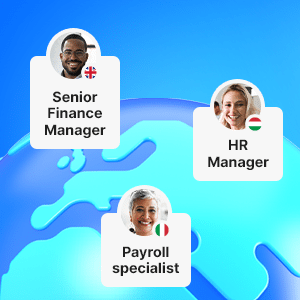Human resources (HR) and payroll each play key roles in the employer-employee relationship. For either department to run smoothly, there must be collaboration between the two. At a macro level, however, the relationship between HR and payroll can be fraught with challenges.
The disconnect between the two functions is well-known, and to a certain degree logical, given the different skills required by the two departments (and the different personalities they attract). Payroll can be heavy on numbers. HR can be heavy on people.
But payroll is also about people, and technology plays a key role in connecting the individuals who execute both functions. But, while various enterprise software solutions help bridge the divide between HR and payroll (and their personnel), they rarely do it well.
Traditional payroll solutions have largely underserved the HR-payroll relationship, allowing the functions to remain distinct and reliant on time-consuming manual processes and mismanaged data. Frankly, both functions deserve better solutions and better strategies.
Eliminating the gaps and “gray spaces” between payroll and HR takes more than technology. It requires an integrated, holistic global payroll strategy designed to facilitate cross-departmental collaboration.
HR-Payroll Integration Today: Manual, Dated, Basic
The “gray spaces” between HR and payroll are a byproduct of a lack of cohesion. Without a standardized approach to data sharing, many organizations fail to transfer all applicable employee data and compliance information from HR to payroll (and vice versa) in an accurate manner.
Then there’s the communication gap. In organizations where payroll reports to HR, there can be strong alignment and effective communication among all parties involved. For the majority of medium-sized multinational organizations, however, that isn’t the case. Payroll reports to finance for 80% of companies with 1,000 to 10,000 employees.
That structure can create a significant chasm between the HR and payroll departments. It often leads to endless communication cycles of data-transfer and report requests, which entails significant staff time.
Why? Because while technology has brought most traditional HR and payroll processes online, it didn’t bring them online together. As a result, the intersection of HR and payroll remains a space of manual data transfers, spreadsheet downloads, and baseline reports.
For example, to share information about starters and leavers, employee benefits, and time and attendance, HR and payroll teams typically rely on desktop-bound processes—export the spreadsheet from the enterprise resource planning (ERP) or human capital management (HCM) solution, save it to a local folder, and then load it to the payroll system. This increases the likelihood of manual error while allowing sensitive employee data to become more vulnerable. And when an organization’s payroll providers lack the controls to validate the accuracy of employee data, the risk of processing errors and delays is exacerbated.
The risk also multiplies by the number of providers executing payroll across an organization’s global footprint. With the average multinational organization relying on 3.7 payroll systems (and larger enterprises relying on dozens more), executing global payroll typically means sending and collecting data from at least three disparate solutions—each with separate workflows and processes.
Those workflows and processes are rarely automated, rarely standardized, and rarely audited for efficiency. As a result, they can easily impact the integrity or volume of data ultimately sent from payroll back to HR. And when payroll supplies incomplete or inaccurate financial information to HR, HR then supplies incomplete or inaccurate cost information to senior management.
Providers’ lack of data standards is also one of many factors placing payroll in a proverbial “black box.” By providing no transparency into in-process payroll performance and operating with minimal process automation or audit functionality, payroll vendors can shield clients from unnecessary delays or inconsistencies until after they’ve already happened.
The “black box” of payroll then creates a “gray space” of misinformation and errors that impacts both the HR and payroll functions. It also creates an enterprise-wide reliance on out-of-date data. By the time information is exported, saved, and uploaded, it may already be inaccurate compared to more recently supplied employee information. It could also produce fraud vulnerabilities and (potentially costly) compliance risks.
Compliance management is an especially troubling gray space of the HR and payroll relationship, because large organizations rarely have defined processes around the monitoring of global requirements or the tracking of submissions and deadlines. Even with regulatory and statutory requirements around the globe changing regularly, many multinational organizations opt to rely on the specialized knowledge of a few well-informed employees.
HR-Payroll Integration Tomorrow: Automated, Real-Time, Insightful
When payroll is managed through disparate systems and processes, there can be little potential for it to be tied to the goals of HR or finance in any substantive way. With so much third-party involvement, the potential for errors or mismanagement of data in either the HR or payroll function remains unnecessarily high—as does the potential for processing delays and inconsistencies to hurt the departmental performance of either function.
Ultimately, while the HR and payroll functions require different skill sets among their respective staff members, they both prioritize efficiency and accuracy. Achieving stronger data integrity is the key to both.
It’s also the key to unlocking greater significance for payroll in the eyes of senior management. As the only function that regularly touches every employee in the organization, payroll should provide a data set with untold strategic value in matters related to expansion, resource use, workforce management, and more. But a useful data set cannot be achieved without a foundational strategy for collecting and processing payroll in a standardized way.
By establishing a holistic global payroll strategy and cultivating higher-quality data, payroll stakeholders can deliver greater value to the enterprise while achieving a stronger and more collaborative relationship with the HR side of the house. The first step to a holistic global strategy is ensuring that an organization’s payroll solution and services maintain data integrity across all systems and processes that touch the payroll process.
Standardized, seamless, and automated integration between an organization’s payroll solution and HR software is the first step to establishing a strong “data foundation” for both functions—a foundation that can help organizations lower processing times, decrease error rates, and reduce the frequency of payroll reprocessing. It’s also the ideal starting point for the kind of accurate, useful, and actionable analytics that can elevate payroll’s strategic importance to the enterprise.
With better integration and data integrity also comes better transparency. When an organization’s entire global payroll operation is processed according to the same processes and standards (mindful of location-specific requirements), there’s no need for payroll to stay locked in a black box until processing is complete. Better visibility into payroll benefits all parties involved—payroll, HR, and the solutions provider—by allowing issues to be flagged and addressed before or during processing, instead of coming to light in the exception report. Incorporating compliance management into a holistic and data-driven global payroll solution can also mitigate an organization’s risk factors by automating various elements of compliance and injecting greater structure and visibility into requirements, deadlines, and filing statuses
Ultimately, a more illuminated payroll experience eliminates the many gray spaces between the two “people functions” of the enterprise. By linking an organization’s numbers with its workforce in an integrated, global, end-to-end way, HR and payroll can become stronger allies for the benefit of both an organization and its people.



